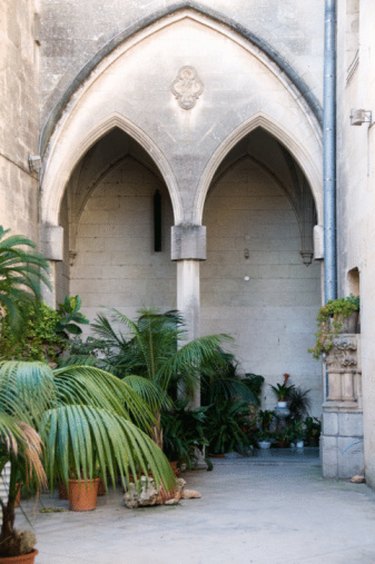Things You'll Need
New potting soil
Light organic matter: redwood, pine or other shredded bark mulch
Sharp sand (builder's sand, not play sand)
Large bucket for mixing
Wooden spoon or other blunt tool for shaping, tamping soil
Water
Soil pH meter

Of the three elements critical to plant growth, the one which gardeners have the greatest control over is soil. Sunlight and rain will continue to operate independently, but gardeners can have a significant impact on the growth of plants by providing the appropriate growing medium. Palms, especially when grown as house or patio plants, have soil-content demands that must be met for successful growth. Learn to make your own palm-plant potting soil, and watch your tropicals flourish.
Step 1
Purchase new ingredients for soil-mix if possible. Yard soil, yard refuse and beach sand all contain minerals and possible disease organisms that will make it harder for your palm plant to get established. This is especially so in areas where yard soil and natural water have a high alkaline content. Palms do best when potting soil pH is between 6.0 and 7.0, that is, between slightly acidic and neutral.
Video of the Day
Step 2
Combine soil-mix ingredients in the following proportions: 2 parts potting soil, 2 parts organic material, and one part sand. Mix ingredients together thoroughly, dampen with water, and check with your pH meter.
Step 3
Line your palm plant pot with a thick layer of soil, rounding out a cavity as close as possible to the size of your plant's root ball. Literature on growing palms is clear and consistent: palms do not respond well to rough handling during transplanting. Very gently, ease the plant root ball out of its former pot and move it to the new one without disturbing roots in any way, if possible. Take as much soil from the former pot with the roots (professional growers sometimes move the old pot into the new one to lessen disruption).
Step 4
Tuck additional new soil around the palm plant root ball once it is seated in the new pot. Avoid pressing hard against roots with your wooden spoon or other blunt soil-tool. "Respect the Rootball" appears to be the palm-grower's mantra at all turns.
Step 5
Water your transplanted palm plant according to requirements for its variety. Regular and adequate watering, especially for transplants moving into very warm or very dry growing conditions, is critical to successful growth.
Tip
Check your soil periodically for pH level once your transplant starts to settle in. Increase organic matter if soil registers too alkaline (pH above 7.0). Add dolomite lime to raise excessive acidity (pH below 6.0).
Video of the Day